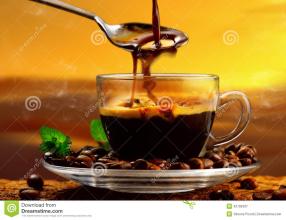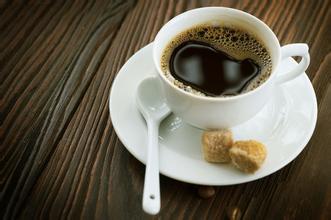Introduction to the unique acidic taste of San Pedro Manor Coffee, Puerto Rico
On 6 November 2012, Puerto Rico held its fourth referendum. The referendum consists of two rounds of voting. In the first round, Puerto Ricans voted on "whether they want to change the status quo in their relations with the United States". 1.8 million people were eligible to vote, 65000 gave up the first round of voting, and 54 per cent of those who took part in the vote supported a change of relationship. Subsequently, Puerto Ricans made a choice on how to make a change, with three options for voters to choose from: "become a state of the United States", "expand autonomy" and "full independence". In this round of voting, only 1.3 million people voted, 61 per cent supported becoming the 51st state of the United States, about 33 per cent wanted to expand autonomy, while only 5 per cent were in favor of full independence Puerto Ricans were the general name of the residents of United States Puerto Rico in Central America and the Caribbean. There are about 3.4 million people (1979). Spanish and English are widely used. More Catholic. The earliest inhabitants of Puerto Rico were Arawak and Caribbean Indians. In 2012, whites of European origin accounted for about 73% of the population, mixed-race people accounted for 23%, and blacks accounted for 4%. There are also more than 20,000 Americans and immigrants from other countries. 20% of the economically independent population are engaged in industry, 17.2% in commerce, 7.3% in agriculture, 17% in construction and transport, and 33.7% in service industries. [7] the citizens of Puerto Rico are all United States citizens in a complete sense. After moving to the United States, they have the right to vote in the national election. The current Governor Alejandro Garcia Patia (Alejandro Garcia Padilla)
), people's Democratic Party. Born in Puerto Rico on August 3, 1971, he received a bachelor's degree in political science and economics from the University of Puerto Rico and a law degree from the Pan American University of Puerto Rico. Professional lawyer. Zeng Renbo, assistant judge of the Court of Appeal and professor of law at the Pan American University of Puerto Rico. From 2005 to 2007, he served as Minister of Consumer Affairs of Poland. He was elected as a senator in 2008. He has been chairman of the people's Democratic Party since April 2011. He was elected governor of Poland in November 2012 and took office in January 2013, which historically focused on sugar cane farming, and later industry surpassed agriculture as a pillar of the economy. Front
The five major economic sectors are manufacturing, finance, insurance and real estate, other services, government expenditure and trade. The main industries include pharmaceuticals, electronics, petrochemical, food processing, textiles and clothing, etc. Tourism is also an important part of Poland's economy. In 2009, tourism accounted for 7% of Poland's total income.
And Jaime Fortuno, the president of Escoki's Escogido Yauco agency, pays silent attention to all this work every year, even the smallest details. Fortuno is an investment banker who graduated from Harvard Business School. He was determined to seize every opportunity to open up a market for top coffee in Puerto Rico. He expects a maximum annual output of 3000 bags of 45kg each, less than 1 per cent of the island's total coffee production.
This is why Puerto Rico and Puerto Rico Yukot Yauco Selecto are different. Yukot chooses manor beans. Puerto Rico coffee beans, jointly launched by Puerto Rico San Pedro, Caracolillo and La Juanita, are carefully planted with pure flavor, aroma and heavy granule, and the best coffee is Yauco Selecto, which means "Selecto". Yaocote Coffee is grown only on three farms in the southwest of the island, San Pedro, Caracolillo and La Juanita. It is a truly high-quality coffee with a strong flavor and a long aftertaste. The hills of southwestern Puerto Rico have a mild climate, a long period of plant maturity (from October to February) and high-quality clay. People here have been using an eco-friendly, intensive planting method, picking only fully ripe coffee beans and then flushing them in a drum device for 48 hours. Yaocote selected coffee beans are preserved with sheepskin before sale and will not be removed until order and delivery to ensure the best freshness of the coffee. Relevant U.S. government employees, such as FDA and USEA, will also be present at the transaction, and they are here to monitor producers' compliance with federal regulations. There are also professional evaluators who randomly take one bag of coffee from every 50 bags as samples and use international gauges to identify the quality of coffee beans. These are all to ensure the quality of the real Yaocote selected coffee. In fact, any kind of coffee will be given a unique flavor because of its origin, just like different music styles will always give you different feelings. Puerto Rico Yaoke coffee has the characteristics of boutique coffee, its acidity is very stable, full of particles, complete flavor, rich aroma. The reason why Yaocote chose coffee beans to be better than other producing areas on the island is that it is grown in high-altitude mountain areas, so it grows slowly and has rich fruit flavor, and it uses ancient coffee tree species, which have a unique flavor despite less yield. this is incomparable to some new tree species. Due to the abundant rainfall, rich soil and high-altitude microclimate zone, Yaoke coffee has all the qualities that gourmet coffee should have. Of course, Yaoke coffee is inseparable from the hard work of those coffee workers, who manage the whole process from planting coffee seedlings to post-harvest treatment.
And each kind of coffee has its own unique taste, when you taste Yaoke coffee, you will feel the unique acidic taste of Central American coffee, which is the most characteristic taste of Caribbean island coffee, so some people compare Yaoke coffee to the coffee with the most attractive tongue.

Important Notice :
前街咖啡 FrontStreet Coffee has moved to new addredd:
FrontStreet Coffee Address: 315,Donghua East Road,GuangZhou
Tel:020 38364473
- Prev

The taste of Hassanda Coffee Garden in Ecuador is crisp and the taste of the manor is characterized by the introduction of high-quality coffee.
The earliest steam ocean-going ship in South America, which Ecuadorians are proud of, is moored at the mouth of the sea. Above the snowy peak, the sun shines brightly in May, which symbolizes Mayan culture. The twelve officials of the zodiac marked with the months of March, April, May and June on both sides of the sun represent the difficult years of the Ecuadorian people defending their country against foreign invasions in 1845. The beam at the bottom represents the country of the Republic.
- Next

Very rich aroma coffee from Atlanta Manor, Jamaica. Introduction to boutique coffee.
In the decades after 1872, Jamaica's economy gradually prospered, but its social and cultural development was always suppressed by the colonial authorities. Especially during the Great Depression, all walks of life in Jamaica were very dissatisfied with the depressed social situation. In 1938, workers in Jamaica revolted. After that, the colonial authorities were forced to grant local autonomy. In 1944, the first of Jamaica
Related
- Does Rose Summer choose Blue, Green or Red? Detailed explanation of Rose Summer Coffee plots and Classification in Panamanian Jade Manor
- What is the difference between the origin, producing area, processing plant, cooperative and manor of coffee beans?
- How fine does the espresso powder fit? how to grind the espresso?
- Sca coffee roasting degree color card coffee roasting degree 8 roasting color values what do you mean?
- The practice of lattes: how to make lattes at home
- Introduction to Indonesian Fine Coffee beans-- Java Coffee producing area of Indonesian Arabica Coffee
- How much will the flavor of light and medium roasted rose summer be expressed? What baking level is rose summer suitable for?
- Introduction to the characteristics of washing, sun-drying or wet-planing coffee commonly used in Mantenin, Indonesia
- Price characteristics of Arabica Coffee Bean Starbucks introduction to Manning Coffee Bean Taste producing area Variety Manor
- What is the authentic Yega flavor? What are the flavor characteristics of the really excellent Yejasuffi coffee beans?

